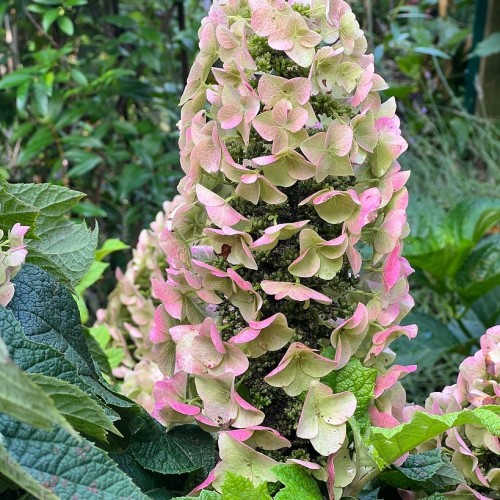
oakleaf hydrangea
Hydrangea quercifolia 'Piihq-i' JETSTREAM
Cycle:
Perennial
Watering:
Average
Hardiness Zone:
5 - 9
Flowers:
Flowers
Sun:
Full sun,part shade
Leaf:
Yes
Growth Rate:
Low
Maintenance:
Low
Salt Tolerant:
Yes
Care Level:
Medium
watering
Oakleaf Hydrangea requires regular, deep watering. During the spring and summer months, water your Oakleaf Hydrangea once or twice a week, making sure to thoroughly soak the entire root zone. During the fall and winter months, water your Oakleaf Hydrangea once every 10-14 days. Do not over-water, as this can cause root rot or other issues.
sunlight
Oakleaf Hydrangeas (Hydrangea quercifolia 'Piihq-i' JETSTREAM) require lots of sunlight to thrive. The ideal amount of sunlight for Oakleaf Hydrangeas is 6-8 hours of direct sunlight per day. The sun can be full sun or dappled sun if direct sunlight is not available. Additionally, when providing sunlight to an Oakleaf Hydrangea, it’s important to be aware of the time of day. For the best results, make sure the plant gets most of its sunlight during the morning hours. Too much afternoon sun can be too harsh for the plant and cause burning or fading of the foliage.
pruning
Oakleaf hydrangea should be pruned in late winter or early spring, which is the ideal time to start. Pruning is only necessary to maintain the desired size and shape of the plant. When pruning, it's important to keep in mind that oakleaf hydrangeas bloom on old wood, so only remove any overgrown or dead stems at this time. Begin by removing up to 1-third of the oldest, woodiest stems at the base of the plant. These should be cut off at soil level to encourage new growth from the base. This will also help the plant maintain a more balanced shape. Next, selectively prune out any crossing branches or branches that are growing horizontally. You may also want to trim the ends of the longest stems to reduce the overall size of the shrub, but be careful not to overprune. Lastly, trim away any foliage that is lying on the ground. This will help the plant get plenty of air circulation to promote healthy growth.
